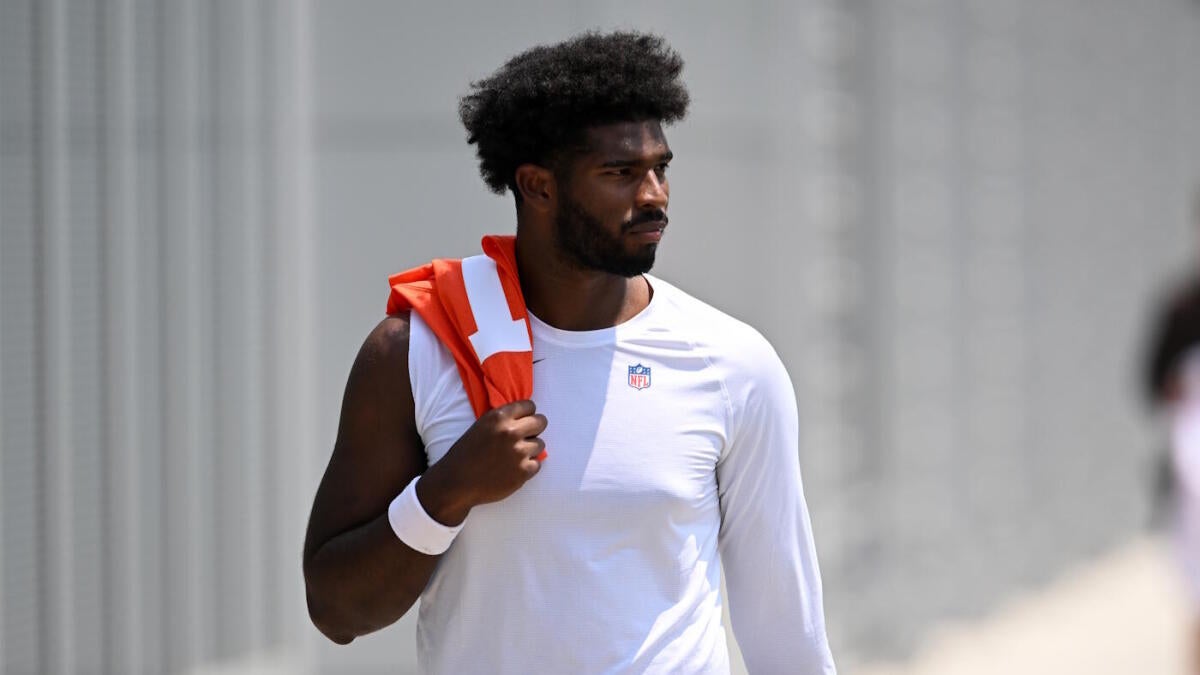Navigating Turbulence: Shedeur Sanders’ Speeding Citations and the Path Forward
The journey of an NFL rookie is often marked by growth, adaptation, and the occasional stumble. For Shedeur Sanders, the Cleveland Browns’ promising quarterback, the early chapters of his professional narrative have been overshadowed by a series of speeding violations. These incidents, occurring within a mere span of two weeks, have sparked conversations about responsibility, judgment, and the expectations placed upon young athletes in the public eye.
A Pattern Emerges: The Initial Citation
On June 5th, in Medina County, Ohio, Sanders was pulled over by the Ohio State Patrol for driving 91 mph in a 65 mph zone. This initial infraction, while alarming, was just the beginning of a troubling pattern. Sanders’ failure to appear in court for the arraignment, scheduled before June 17th, added another layer of concern. This oversight hinted at a lack of seriousness regarding the initial violation and set the stage for escalating issues.
Accelerating Trouble: The Second Citation
Just days later, on June 17th, Sanders found himself in hot water again. This time, Strongsville police caught him speeding at a staggering 101 mph on I-71 North, where the speed limit is 60 mph. This incident, occurring mere days after the missed court date, painted a picture of a young man seemingly indifferent to the consequences of his actions. The choice of vehicle, a Dodge TRX pickup truck, only amplified the recklessness of the situation.
A Chorus of Confirmation: Media Coverage
The incidents gained traction in the media, with numerous outlets confirming the citations through police records and court documents. ESPN, USA Today, NBC News, MSN, and local Cleveland stations like Fox 8 all reported on the incidents, underscoring the public interest and the seriousness of the situation. The consistency of the details across these sources bolstered the credibility of the reports, leaving little room for doubt.
The Browns’ Stance: Internal Discussions and Expectations
The Cleveland Browns organization acknowledged the situation, initially declining public comment but addressing the matter internally. Team officials reportedly discussed the speeding tickets with Sanders, who explained his actions. While the specifics of his explanation remain private, this internal discussion signals the Browns’ recognition of the potential fallout and their commitment to responsible behavior from their players.
The Price of Recklessness: Potential Penalties
Sanders faces financial penalties for both citations, with the first offense potentially costing him $269 and the second $250. However, the repercussions could extend beyond monetary fines. His failure to appear in court for the first citation could result in additional fines, a suspended license, or even a warrant for his arrest. Moreover, repeated traffic violations could impact his driving record and insurance rates.
Beyond the Speed Limit: A Pattern of Disregard
The incidents raise broader concerns about Sanders’ judgment and respect for the law. The combination of excessive speed and the failure to appear in court suggests a pattern of disregard for rules and consequences. This is particularly troubling for a professional athlete, who is often viewed as a role model and whose actions are scrutinized under a magnifying glass.
The Public Eye: Impact on Perception and Team Image
The negative publicity surrounding these incidents could tarnish Sanders’ public image and reflect poorly on the Browns’ brand. The team has invested in Sanders as a future asset, and his off-field behavior could overshadow his on-field potential. The Browns organization will likely emphasize the importance of responsible conduct and may implement additional measures to ensure Sanders understands the expectations placed upon him.
Rookie Mistakes and Accountability
While these incidents may be chalked up to “rookie mistakes,” accountability remains paramount. The Browns organization must reinforce the importance of responsible behavior and ensure that Sanders understands the gravity of his actions. This is not just about avoiding penalties; it’s about fostering a culture of respect and responsibility within the team.
A Crossroads for a Rising Star
Shedeur Sanders stands at a crossroads. His recent speeding citations represent a significant challenge early in his NFL career, but they also present an opportunity for growth and learning. The incidents are not merely about breaking the law; they reflect a pattern of questionable judgment and a potential disregard for responsibility. While the financial penalties are relatively minor, the potential damage to his reputation and the team’s image is substantial.
The Browns’ response, coupled with Sanders’ own willingness to learn from these mistakes, will be crucial in determining whether this is a temporary setback or a harbinger of future problems. Ultimately, Sanders’ choices in the coming weeks and months will define not only his career on the field but also his character off it. This is a pivotal moment for a rising star, and how he navigates this turbulence will shape his journey in the NFL and beyond.
Looking Ahead: Responsibility and Redemption
As Sanders moves forward, the focus should be on responsibility, redemption, and growth. The Cleveland Browns organization, along with Sanders himself, must prioritize learning from these mistakes and demonstrating a commitment to responsible behavior. This involves not just avoiding future infractions but also taking proactive steps to show maturity and accountability.
For Sanders, this means embracing the role of a professional athlete and understanding the weight of his actions. It means respecting the law, honoring his commitments, and conducting himself in a manner that reflects positively on both himself and the Browns organization. For the Browns, it means providing the support and guidance necessary for Sanders to grow into a responsible and respected member of the team.
In the end, this is more than just a story about speeding tickets. It’s a story about growth, accountability, and the choices we make when faced with adversity. It’s a story about a young man navigating the complexities of professional life and the expectations that come with it. And it’s a story that, with the right choices and the right support, can have a happy ending.











